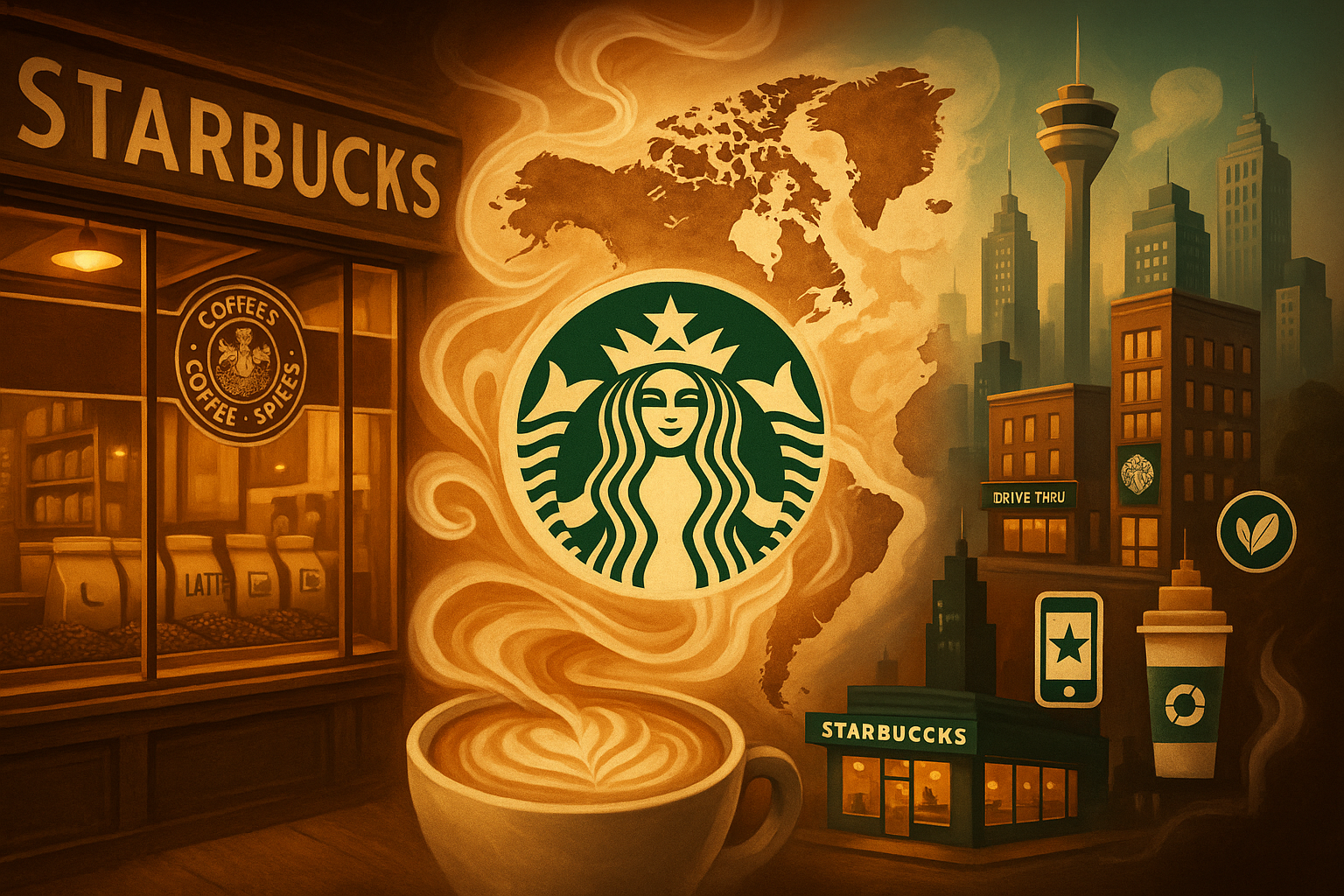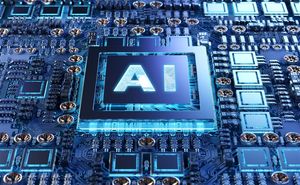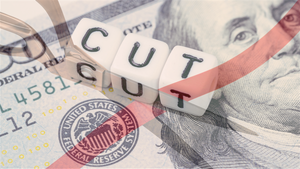
Starbucks (NASDAQ: SBUX) is an American multinational chain of coffeehouses and roastery reserves, widely recognized for its signature coffee beverages, comfortable ambiance, and global presence. From its humble beginnings as a single store selling coffee beans in Seattle, Starbucks has transformed into a cultural phenomenon, redefining the way millions around the world experience coffee. The company's journey is a testament to entrepreneurial vision, strategic expansion, and a relentless focus on creating a unique "third place" experience for its customers.
Foundation and Early Years
Starbucks' story began in 1971, born from the shared passion for fine coffee among three friends: Jerry Baldwin, a former English teacher; Zev Siegl, a history teacher; and Gordon Bowker, a writer. Inspired by coffee roasting pioneer Alfred Peet, they sought to bring high-quality, dark-roasted coffee to Seattle, a city where such offerings were scarce. With a modest investment of $1,350 each and a $5,000 bank loan, they opened their first store on March 30, 1971, in Seattle's iconic Pike Place Market. The name "Starbucks" was chosen to evoke the seafaring tradition of early coffee traders, drawing inspiration from the first mate, Starbuck, in Herman Melville's classic novel "Moby Dick."
Initially, Starbucks' business model was straightforward: to sell high-quality, fresh-roasted whole coffee beans, tea, and spices for customers to brew at home. For its first two years, the company sourced green coffee beans from Peet's Coffee & Tea. In 1973, Alfred Peet ceased supplying Starbucks but assisted in training their new Roastmaster, Jim Reynolds. The founders acquired a used roaster from Holland, and Baldwin and Bowker began experimenting with Peet's roasting techniques to develop their own unique blends and flavors. For its first decade, Starbucks operated as a local coffee bean retailer, expanding to four stores in Seattle by the early 1980s, distinguished by their commitment to top-quality, fresh-roasted coffees.
A pivotal moment arrived in 1981 when Howard Schultz, a young New Yorker, visited the original Starbucks store and was captivated by the coffee and the atmosphere. He joined the company in 1982 as the director of retail operations and marketing. One of the significant early challenges was the limited scope of Starbucks' initial business model. While successful as a bean retailer, the founders, Baldwin and Bowker, were hesitant to expand beyond selling beans and equipment.
The solution to this challenge emerged from Howard Schultz's vision. During a trip to Milan, Italy, in 1983, Schultz was profoundly impressed by Italy's vibrant espresso culture and the strong sense of community he observed in Italian coffeehouses. He envisioned replicating a similar "third place" experience – a welcoming space between work and home where people could gather, relax, and enjoy premium coffee – in the United States. However, the original owners were reluctant to deviate from their established model. In 1985, Schultz departed Starbucks to establish his own coffeehouse chain, Il Giornale, which offered brewed coffee and espresso beverages made from Starbucks' coffee beans.
In 1987, a transformative event occurred when the original owners sold the Starbucks chain to Howard Schultz. Schultz rebranded his Il Giornale outlets as Starbucks, marking a significant shift in the company's business model to include serving espresso-based drinks and cultivating a comprehensive coffeehouse experience. This transformation involved a deliberate focus on creating a welcoming "third place" environment. This strategic pivot enabled Starbucks to expand rapidly, opening its first locations outside Seattle in Chicago and Vancouver, Canada, in 1987. By 1989, the company boasted 55 Starbucks stores across the United States, and it went public in mid-1992. While the initial challenge was the founders' limited vision, later challenges arose with rapid expansion. In the mid-2000s, Starbucks faced issues such as overexpansion, which risked diluting brand exclusivity and leading to sales cannibalization. The global financial crisis in 2008 also presented a significant hurdle. Solutions to these later challenges included a strategic reassessment in 2008, leading to the closure of 600 underperforming U.S. stores to reduce operating costs and refocus on the customer experience. CEO Howard Schultz temporarily closed all U.S. stores for a day in 2008 to retrain baristas on making the perfect espresso, aiming to restore the brand's premium image and customer trust. Starbucks also diversified its product offerings to include healthier options, plant-based beverages, and ventured into the ready-to-drink market with bottled beverages, creating new revenue streams. Recognizing its lag in the digital space, Starbucks invested in technology, including an interactive website and mobile ordering, to enhance customer experience and loyalty. To address rising costs, Starbucks leveraged customer loyalty to pass on increased expenses (due to wages and coffee prices) to consumers through price hikes, aiming to protect operating margins.
Growth and Development
Starbucks' journey from a local Seattle retailer to a global coffee powerhouse is marked by a series of strategic decisions and continuous innovation. The company's initial public offering (IPO) in 1992 was a significant milestone, allowing for accelerated expansion. By 1994, Starbucks had opened its first drive-thru location, catering to the growing demand for convenience. A pivotal product introduction came in 1995 with the launch of the Frappuccino, a sweetened, ice-blended coffee drink that quickly became an iconic offering and a global sensation.
International expansion began in earnest in 1996 with the opening of the first store across the Pacific Ocean in Japan, followed by Singapore in 1997. Starbucks entered the European market in 1998 with its first store in London, and in the same year, extended its brand into grocery channels across the U.S. The company's entry into the vast Chinese market in 1999 marked another crucial step in its global growth strategy. Recognizing the evolving needs of its customers, Starbucks began offering free Wi-Fi in its stores in 2002, a move that attracted customers and encouraged longer stays, further solidifying its "third place" concept. In 2009, the company launched Starbucks VIA Instant coffee, providing a convenient option for at-home consumption. Ethical sourcing became a stronger focus in 2013 with the establishment of a coffee farming research and development center in Costa Rica. The popular Cold Brew iced coffee was launched in 2015. More recently, in 2018, Starbucks committed to phasing out disposable plastic straws by 2020 and operating 10,000 'Greener Stores' globally by 2025. That same year, it formed the Global Coffee Alliance with Nestlé, expanding its reach in the consumer packaged goods market. Starbucks continued to elevate its brand experience with the opening of Reserve Roastery locations in Tokyo and Chicago in 2019. In 2020, the company announced an ambitious sustainability aspiration to become "resource positive," aiming to give more than it takes from the planet.
Starbucks' market dominance is a result of a multi-faceted expansion strategy. The "third place" concept, positioning its stores as a comfortable environment between home and work, has been central to its appeal. The company has employed an aggressive store expansion and saturation strategy, often opening multiple locations in close proximity to capture market share and ensure convenience. International expansion has been phased, starting with North America, then expanding into Asia and Europe, and strategically entering emerging markets like China, India, and Brazil. Starbucks employs a multi-domestic strategy, balancing global standardization with local responsiveness, adapting its offerings and marketing to local preferences while maintaining its core brand identity. Strategic partnerships with local businesses, such as Alibaba in China and Tata Consumer Products in India, have facilitated international growth. Digital integration, through its mobile app for ordering, payment, and loyalty programs, has enhanced customer convenience and provided valuable data. Starbucks maintains a premium pricing strategy, justifying higher prices through product quality, ethical sourcing, and the overall "Starbucks experience." Vertical integration, controlling its supply chain from bean sourcing to customer loyalty programs, ensures quality consistency and strong customer relationships.
The evolution of Starbucks' products and services is driven by continuous innovation and diversification. Beyond initially selling only coffee beans, the company transformed into a coffeehouse chain offering a wide array of espresso-based beverages. The Frappuccino's launch was a significant milestone, and the menu has continually diversified to include seasonal drinks, teas, juices, and a range of food items. There's an increasing focus on health and wellness, with options like non-dairy milk, vegan choices, and low-calorie ready-to-drink beverages. Starbucks is also exploring new product platforms such as protein cold foam and coconut water-based drinks. The company aims to introduce global flavors and customizable energy offerings, leveraging successful menu items from international markets. Digital services, including the Starbucks Digital Network, mobile ordering, and delivery, have expanded customer interaction. Beyond products, Starbucks has innovated the customer experience through localized store designs, expanded drive-thru options, and early adoption of free Wi-Fi. The Starbucks Rewards program has been a key driver of customer loyalty, providing the company with upfront cash flow through its stored card value system.
Major Achievements
Starbucks has consistently demonstrated its leadership in the coffee industry through groundbreaking innovations, widespread recognition, and a dominant market position. The company has leveraged technology and product development to enhance the customer experience and streamline operations. A significant innovation was the introduction of its mobile payment app in 2011, predating Apple Pay by three years. This app became the largest mobile payment program in the U.S. at the time, allowing customers to place and pay for orders in advance, significantly reducing wait times. The Starbucks Card, initially a reloadable gift card, evolved into the highly successful Starbucks Rewards digital loyalty program, which rewards customers with points for purchases, redeemable for free items and exclusive offers. This program also provides Starbucks with invaluable data insights for personalized marketing.
In 2019, Starbucks launched an AI engine to improve operational efficiency in areas such as inventory management, preventive maintenance of coffee machines, and staff scheduling. They also utilize advanced data analytics to understand customer behavior, track sales trends, forecast demand, and optimize inventory. Further enhancing convenience, Starbucks introduced "My Starbucks Barista" in 2017, an app feature allowing customers to order and customize drinks using voice commands, and enabled reordering through Amazon Alexa devices. Product innovation is a continuous process, with recent and upcoming offerings including protein cold foam, coconut water-based teas and coffees, global flavors, customizable energy offerings, and new artisanal food items. Starbucks also operates Hacienda Alsacia in Costa Rica, a coffee farm that serves as a research and development hub focused on sustainable practices and environmental concerns. The company's Tryer Center, an innovation incubator at its headquarters, brings together diverse teams to identify problems and create solutions, leading to innovations like the Clover Vertica (a fast coffee brewer) and a portable cold foam blender.
Starbucks has received numerous accolades, often highlighting its exemplary workplace culture, benefits, and brand strength. In 2024, it was recognized for "Best Company Perks & Benefits" for large companies, and in 2022, for "Best Company Work-Life Balance." It was also named one of the "Best Places to Work in Seattle" in both 2021 and 2022. Starbucks has consistently been acknowledged for its coffee quality, earning the "No. 1 Best Coffee" title in the Fast Food and Quick Service category. Internally, the "Bravo Award" recognizes partners (employees) who achieve goals supporting the company's mission, values, and objectives, demonstrating outstanding performance or leadership.
Starbucks maintains a strong global market leadership position, characterized by its widespread brand recognition and extensive store expansion. With over 40,000 stores worldwide, its global footprint demonstrates its resilience and appeal across diverse markets, contributing to customer loyalty and solidifying its leadership in the coffee industry. The company's business model, encompassing company-operated stores, licensing, and channel development, provides diverse revenue streams and mitigates risks. Starbucks continues to invest in enhancing the in-store experience through initiatives like the Green Apron Service model. A strategic focus on digital engagement is evident in its plans to revamp its mobile app and rewards system by 2026 to engage digitally savvy consumers and strengthen customer loyalty. Starbucks also demonstrates adaptability to evolving consumer preferences, actively responding to the demand for plant-based options and health-conscious products by innovating its food and beverage offerings.
Corporate Culture and Leadership
Starbucks' enduring success is inextricably linked to its distinctive corporate culture and the visionary leadership that has guided its evolution. Howard Schultz is widely credited with transforming Starbucks from a small coffee bean retailer into a global coffeehouse empire. His visionary leadership, inspired by Italian coffeehouses, led him to envision Starbucks as a "third place" – a welcoming community hub between home and work. After joining Starbucks in 1982 as director of operations and marketing, he purchased the company in 1987, merging it with his own coffee concern, Il Giornale. Under his guidance, Starbucks experienced rapid expansion, growing from fewer than 20 stores to over 100 in four years, and by the end of the decade, it had approximately 2,500 locations in about a dozen countries. He oversaw its IPO in 1992 and its international expansion beginning in 1996. Schultz also pioneered groundbreaking employee benefits, including comprehensive healthcare and stock options for both full-time and part-time workers, influenced by his own father's struggles with job-related injury and lack of benefits. After stepping down as CEO in 2000, Schultz returned in 2008 during a period of decline. He initiated a significant turnaround, closing 900 stores, streamlining operations, and refocusing on quality and authenticity, even famously closing all U.S. stores for a day to retrain baristas. These efforts led to a financial rebound by 2012. In 2014, he foresaw a shift in consumer behavior and invested heavily in mobile technology, leading to Starbucks having a top-ranked retail mobile app platform.
Kevin Johnson, who served as CEO from 2017 to 2022, succeeded Howard Schultz. Johnson focused on improving operations and profitability, including acquiring full control of Starbucks' East China operations, selling the TAZO tea brand, and securing a global distribution deal with Nestlé. Leveraging his background in technology, Johnson enhanced the Starbucks app, improved mobile ordering, and expanded the rewards program. He also led the "Deep Brew" project, which uses machine learning for personalized offers, scheduling, and inventory management. Johnson oversaw global expansion, particularly in China, and the development of more innovative beverages, while also addressing corporate programs related to racial inequality in the U.S.
Laxman Narasimhan, who became CEO in April 2023, succeeded Howard Schultz, who had been interim CEO. Narasimhan undertook a six-month immersion program, including working half-day shifts as a barista in various Starbucks locations globally, to gain a deep understanding of the brand and stay connected to customers and frontline operations. He unveiled a "Triple Shot Reinvention Strategy" to expand to 35,000 locations outside North America by 2030 (aiming for 55,000 total), implement a $3 billion cost-savings plan, and increase barista wages. Narasimhan acknowledges Starbucks' heritage while recognizing the need to adapt to a changing world, aiming to "refound" the company.
Starbucks' mission statement is: "To inspire and nurture the human spirit – one person, one cup, and one neighborhood at a time." This mission underscores its commitment to creating a positive impact on customers, employees, and communities. The company's core values guide its decision-making and interactions: creating a culture of inclusion, acting with courage, being present, delivering their very best, teamwork, integrity, and perseverance. These values emphasize diversity, equity, respect, continuous improvement, embracing difficult conversations, pursuing audacious ideas, achieving goals with focus and integrity, and continuous innovation.
Starbucks' organizational philosophy is deeply rooted in a people-oriented corporate culture, with a strong emphasis on its employees (referred to as "partners") and the customer experience. The "Partners First" approach involves investing heavily in employees, offering comprehensive benefits like healthcare and stock ownership, and providing extensive training, aiming to foster a sense of ownership and pride. The philosophy posits that happy employees will provide exceptional customer service. Servant leadership is encouraged, with leaders supporting subordinates to ensure every employee grows within the organization. Starbucks strives to create a welcoming "third place" for customers, fostering human connection and community through an inclusive environment where diversity is celebrated. The company encourages a collaborative work environment where partners are invited to share ideas and feedback, fostering innovation and a sense of ownership. Starbucks believes its product is not just coffee, but the entire coffee shop experience and culture, encompassing store design, music selection, and personalized customer interactions. Furthermore, Starbucks is committed to social responsibility through ethical sourcing, promoting diversity, nurturing a green supply chain, and strengthening community ties, with ambitious sustainability goals, including halving carbon emissions and waste by 2030.
Current Status
Starbucks remains a dominant force in the global coffee industry, holding the position of the second-largest restaurant chain worldwide, trailing only McDonald's. As of the end of its fiscal first quarter of 2024, the company boasted nearly 39,000 locations globally, expanding to over 41,000 stores by Q3 2025. Its market capitalization stands at approximately $107-108 billion as of July 2025, underscoring its substantial presence.
Despite its vast footprint and strong brand recognition, Starbucks has faced recent headwinds. The company reported a 2% decline in global comparable store sales in the fiscal third quarter ending June 29, 2025, driven by a 2% decline in transactions. North America, which accounts for 61% of its stores, saw a 2% decline in comparable sales, with transactions down 3%. This has led to a significant drop in net income, which declined by 47.1% in Q3 FY25 compared to Q3 FY24, and earnings per share (EPS) fell by 47.3%. Operating margins have also contracted due to deleverage, inflation, and strategic investments. Starbucks' brand reputation has also seen a decline, dropping from a strong 71.5 points in 2021 to a vulnerable 57.7 points in January 2025 on RepTrak's 100-point index. This is attributed to a perceived lack of value and a shortfall in product innovation. The company has also experienced leadership instability, with four CEO changes in five years, which has impacted performance and alienated some customers and workers. Key competitors include other major fast-food chains with coffee offerings like McDonald's (with its McCafe line and new CosMc's restaurants) and Dunkin' Donuts. Tim Hortons is a significant competitor in Canada. In the at-home coffee market, Starbucks competes with brands like Nespresso, Folgers, Keurig, and Maxwell House.
Under the leadership of new CEO Brian Niccol, who took the helm in September 2024, Starbucks has launched a comprehensive "Back to Starbucks" strategy aimed at a turnaround. This strategy involves several key initiatives: an operational overhaul focused on improving service times and efficiency, with a goal of serving fresh-brewed coffee in under four minutes. The "Green Apron Service" is a bold operational and cultural overhaul designed to restore the customer experience. Starbucks is also simplifying its menu, cutting less popular items and limiting mobile orders to 12 items per customer to streamline operations. Simultaneously, the company plans to introduce new items, such as vegan-friendly falafel and cortado espresso, and in 2026, a protein cold foam and a reimagined artisanal bake case. Store redesign and experience are also a focus, with the reintroduction of ceramic mugs and handwritten notes on cups. Redesigned stores are being piloted in select U.S. locations, featuring separated mobile ordering areas, expanded seating, power outlets, and abundant food displays. The company is also developing a new prototype for standalone units with 32 seats and a drive-thru, designed to be 30% cheaper to build. Starbucks plans to complete at least 1,000 store "uplifts" in North America by the end of calendar year 2026 to create a cozier and more inviting atmosphere. Starbucks is making significant investments in labor, pledging $500 million in additional labor and aiming to double employees' hourly wages by the end of 2025 compared to 2020 levels. To offset these costs, the company is looking to alter its cost structure, including laying off approximately 1,100 corporate employees and shifting executive compensation to incentivize cost-cutting. China remains a focal point for aggressive expansion, with over 30% of new store openings in Q1 2024 occurring in the region. Despite past underperformance, China comparable sales turned positive in Q3 2025, showing a 2% increase driven by a 6% increase in transactions. Starbucks has also reduced the price of non-coffee beverages in China.
Starbucks anticipates a significant turnaround in 2025, viewing it as a transition and investment phase. The company's management has an ambitious goal of reaching 45,000 locations worldwide by the end of fiscal 2025 and 55,000 locations by 2030. This expansion, particularly in China, is expected to substantially boost revenue. Analysts are keenly watching Starbucks' progress under Niccol's guidance, with expectations for impressive same-store sales and earnings growth as the company moves into 2026. The full rollout of the Green Apron service by mid-August 2025 is expected to stabilize transaction trends, and a wave of innovations in 2026, including revamped Rewards loyalty and a new app, could drive customer engagement. The company aims to return to pre-COVID operating margins of 17% by 2026. However, risks persist, including inflation, competitive pressures from boutique coffee chains, and the broader economic climate. While the stock's current P/E ratio is elevated, its strong cash flow and liquidity provide a buffer for strategic investments. The success of the "Back to Starbucks" plan, particularly in stabilizing margins and achieving growth in North America and China, will be crucial for long-term investor returns. Starbucks' commitment to sustainability, including being carbon positive by 2030 and advocating for reusable cups, also positions it for future growth in an environmentally conscious market.
Summary
Starbucks' journey from a small coffee bean retailer in Seattle to a global coffeehouse giant is a compelling narrative of entrepreneurial vision, strategic adaptation, and a relentless focus on the customer experience. Founded in 1971 with a simple mission to sell high-quality coffee beans, the company's trajectory was fundamentally altered by Howard Schultz's vision of creating a "third place" – a welcoming community hub between home and work. This transformative shift, coupled with aggressive expansion, product innovation like the Frappuccino, and pioneering employee benefits, propelled Starbucks onto the global stage.
Despite recent challenges related to market saturation, economic headwinds, and shifts in consumer behavior, Starbucks is actively engaged in a comprehensive turnaround strategy. Under new leadership, the company is streamlining operations, innovating its menu, redesigning stores to enhance the customer experience, and making significant investments in its workforce. With ambitious goals for global expansion, particularly in China, and a renewed focus on its core values and sustainability, Starbucks aims to solidify its market leadership and continue to inspire and nurture the human spirit, one cup and one neighborhood at a time.





